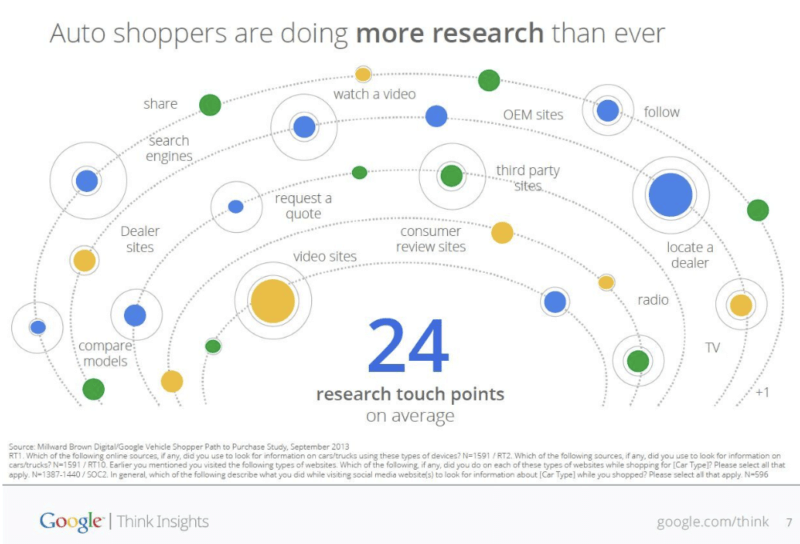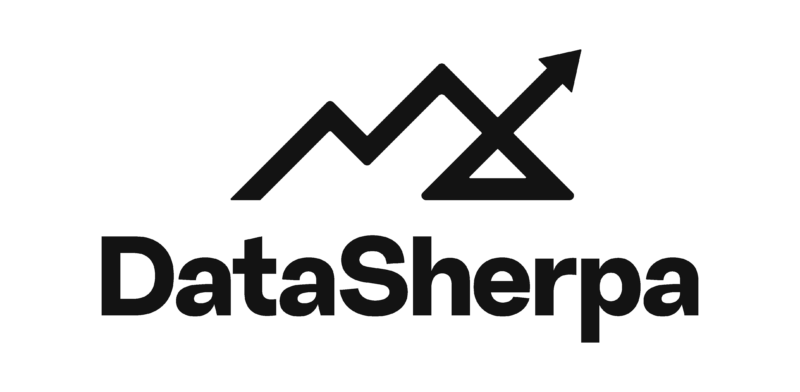We know that shoppers don’t make decisions in a straight line. They’re researching their purchase all over the internet, it’s likely that they’ll visit your website multiple times in addition to seeing your ads, reading reviews, doing multiple google searches as well as visiting 3rd party sites…
So how do you know which of your marketing influenced their purchase decision?
The answer is through Attribution.

What is attribution?
Attribution is a reporting strategy that allows business owners, decision-makers, marketers, and sales teams to see and measure the impact of their marketing on a specific goal (usually sales or leads).
The goal of attribution is to determine which channels (and in some cases messaging, calls to actions, conversion paths, or ad formats) had the greatest impact on a shopper’s decision to convert or take the desired next step.
Attribution reporting provides you with an overhead view of shoppers’ journeys as they interact with your dealership digitally. This enables you to fully understand which marketing channels have the biggest influence on your sales before a customer even submits a lead.
Doesn’t my CRM do this for me?
Not really. CRMs are not an attribution tool, and due to the high degree of human input within a CRM, they are not always reliable. They’ll tell you which tool or vendor generated the lead but they won’t tell you how your marketing influenced that shoppers’ journey up to the point of the lead. For example, if a shopper came to your website by clicking an ad, and then used your 3rd party chat tool to send in their lead then all of the credit for that lead in your CRM would go to the chat tool.
Can’t I get attribution reporting in Analytics or from my website dashboard?
Out-of-the-box conversion reporting in Google Analytics and conversion reporting from a website dashboard typically use last-click attribution to credit the source of a lead. Last-click attribution only gives credit to the last touchpoint a customer had before they submitted the lead. This narrow view provides a limited picture of the overall impact of a dealership’s complete marketing efforts.
If you’re making decisions on your marketing budgets solely based on last-click attribution or the conversion reporting from your vendors then you’re acting with limited data —it may save you marketing dollars in the short term but it’s almost guaranteed to cost you sales.
So what makes attribution reporting better than what I’ve already got?
Ultimately, attribution reporting gives you a framework around which to evaluate your overall marketing efforts and determine how and where your marketing is making an impact.
The goal of attribution is to determine which channels (and in some cases messaging, calls to actions, conversion paths, or ad formats) had the greatest impact on a shopper’s decision to convert or take the desired next step.
Attribution models include (source):
- Last click: Gives all credit for the conversion to the last clicked ad and corresponding keyword.
- First click: Gives all credit for the conversion to the first clicked ad and corresponding keyword.
- Linear: Distributes the credit for the conversion equally across all ad interactions on the path.
- Time decay: Gives more credit to ad interactions that happened closer in time to the conversion. Credit is distributed using a 7-day half-life. In other words, an ad interaction 8 days before a conversion gets half as much credit as an ad interaction 1 day before a conversion.
- Position-based: Gives 40% of the credit to both the first and last ad interactions and corresponding keywords, with the remaining 20% spread out across the other ad interactions on the path.
- Last Click Non-Direct: ignores direct traffic and attributes 100% of the conversion value to the last channel that the customer clicked through from before buying or converting. Analytics uses this model by default when attributing conversion value in non-Multi-Channel Funnels reports.
- ***Data-driven: Distributes credit for the conversion based on your past data for this conversion action. It’s different from the other models, in that it uses your account’s data to calculate the actual contribution of each interaction across the conversion path. The “Data-driven” model is the default attribution model for most conversion actions. ***not currently a part of sMedia’s DataSherpa reporting.
The insights provided by these models into how, where, and when a consumer interacts with a brand or business allows marketing teams or business owners to alter and customize campaigns, shift spending or re-evaluate conversion paths to meet the specific desires of individual consumers, thus improving marketing ROI.
At the end of the day, attribution ties offline results to your digital marketing and gives you a holistic view of your efforts, enabling you to make informed decisions about budgets and vendors.
In our next installment of Behind The Wheel we will cover the differences between Hard & Soft Conversions in Attribution.
Looking for an Attribution Tool built for dealers with the features dealers asked for?
You can’t do better than DataSherpa!







